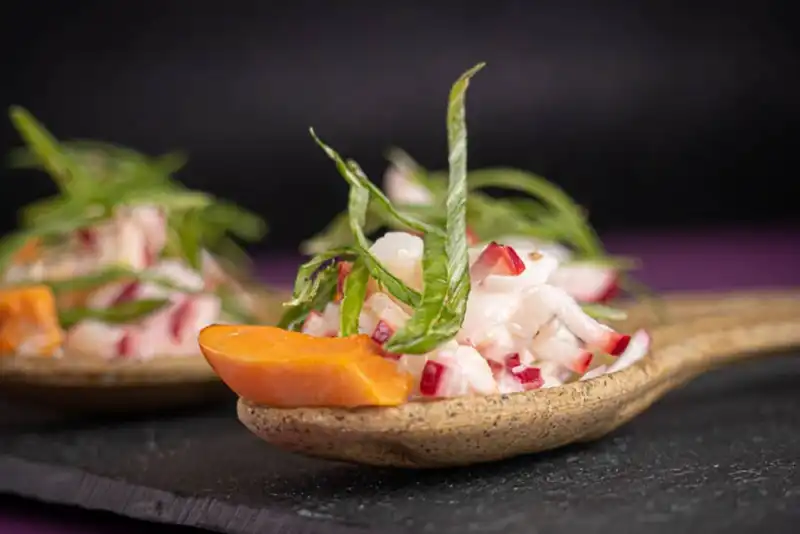What is the food industry?
The food industry is a large and complex sector that encompasses everything, from farming and food production, to food retail and catering. It employs millions of people across the globe and generates billions of dollars in revenue each year. The food industry is constantly evolving, as new technologies and consumer trends emerge. For example, the rise of online grocery shopping and delivery services has changed the way many people buy food. And the popularity of plant-based diets has led to a boom in vegan and vegetarian products. As the food industry evolves, so too do the challenges it faces. These include issues such as food waste, obesity, and sustainability. But despite these challenges, the food industry remains a vital part of our economy and our way of life.
Wheel of Change- 7 Innovations That Have Helped The Food Industry Evolve
The Big Picture- The U.S. Food Industry Today

The onset of Covid-19 in 2020 shook the food and beverage industry like nothing before it. Hundreds of restaurants in the United States shut down, and the ones that stayed open incurred debilitating losses. But these businesses quickly became creative and found ways to tide over the challenges -- online food deliveries flourished, greater and better technology came into use, and social media evolved into an even bigger marketing platform.
Small businesses operating manually embraced tech solutions wholeheartedly -- from restaurant management software solutions for scheduling tables and taking reservations, to online menus, point-of-sale systems, and inventory planning software. (TechNavio, a market research firm, predicts the restaurant management software market will grow by $2.95 billion, between 2020 and 2025.)
With the economy reopening, the restaurant industry is gradually recovering as diners are flocking back to their favorite dining spots. And to ensure that growth is consistent, many more experiments are in the making, all with a customer-facing approach. Take, for example, the growth of the plant-based meat market, which is estimated to reach $7.4 billion by the end of 2022. By 2030, it is expected to hit a whopping $19.8 billion, according to Reports And Insights.
The pandemic rattled the restaurant industry, but it is getting back on its feet with a vengeance. And in the process, it's undergoing an overhaul that's set to transform it forever. This article takes a look at some of the innovations that are central to this transformation.
Change, The Name of the Game
The food industry is forever evolving as trends and consumer tastes change. Some of the factors leading to innovation in the sector are the ever-changing landscape of the business itself, advances in technology, and an increasing focus on healthy and sustainable eating. Coupled with these is the new focus on the environment, which incudes the need to reduce waste and increase sustainable methods of food production.
Companies must innovate their products and processes to stay ahead of the competition. Incorporating new technologies into their operations, innovating menu items as per consumer demands, and adopting new trends in food manufacturing are some of the ways to do this. For example, many restaurants now use iPads and tablets instead of traditional menus, allowing customers to place their orders quickly and efficiently. Some restaurants are using 3D printers to create unique and customized dishes. These trends will likely continue as more companies invest in innovative ideas.
Here's a roundup of seven of the brightest ideas to stir up the industry.
The food industry has not always been the most efficient or sustainable.
But technology is changing business for the better.
No. 1- Robot Revolution

Robots are not new to diners. The first known robot at a US restaurant was the machine at the Two Panda Deli in Pasadena, California, way back in 1983. However, at the time, bots were mostly considered marketing gimmicks to attract customers, rather than the useful machines they have since proven to be.
Almost four decades down the line, we're witnessing a concerted effort by the food service industry to integrate robots into everyday operations. It's the upshot of continuous experiments, technological advancements, the changing nature of the market, and disruptions like economic crises, global wars, and a pandemic.
It is largely to deal with the labor crises and staff shortage caused by these disruptions that the food service industry is bent on bringing robots to the kitchen assembly line and on the restaurant floor.
For instance, Denny's restaurants have started deploying bots on wheels as servers. The experiment began at Denny's corporate headquarters during a peak in the covid pandemic, when staff shortage and social distancing severely disrupted restaurant services.
However, Bear Robotics, the company behind these shelf-like robots, aptly called Servi (first introduced in 2020), started working on the idea in 2017. Bear Robotics is a professional hospitality robotics company specializing in customer service and food processing for large restaurant establishments and major hospitality facilities, such as hotels, hospitals, sports arenas, and retirement communities.
On the other side of the Pacific, Thai coffee chain Black Canyon leveraged robotic technology during the coronavirus pandemic to prevent physical contact between customers and employees. They use the PuduBot robots manufactured by Pudu Robotics. These wheeled machines possess an all-aluminum frame and have multiple shelves. After receiving orders and processing them, staff members place the orders on the PuduBot's shelves, indicating table numbers for efficient delivery. In-built sensors allow the robots to recognize physical obstructions and navigate their way automatically.
Then, there are Miso Robotics' automated kitchen assistants -- Flippy and Slippy -- compact robots that can easily fit into small spaces. These robots help with grilling, frying and drink-dispensing, and can potentially increase the profit margins of a restaurant by almost 30%. There's also Cecilia, developed by Cecilia.ai. Currently hard at work at Aroma Espresso Bar in Israel, Cecilia's built-in features allow it to be more than a robotic bartender. As it mixes drinks, it chats and tells jokes too!
This is just the beginning of the robot revolution. Even as I write this, more and more companies are signing deals with artificial intelligence companies to develop robots that promise to simplify and optimize their operations.
Innovation No. 2- Traceable Supply Chains
Traceable supply chains are becoming increasingly important in the food industry, where food safety is critical. As diners become more interested in the origins of their food, more organizations are leaning on traceable supply chains to track the journey of their ingredients, from farm to table.
As the focus on traceability grows sharper, more and more restaurants are working to establish transparency throughout their supply chains. This process often begins with relationships with suppliers and farmers willing to share information about their practices and products. Once a baseline understanding has been established, restaurants can begin working on tracing individual ingredients back to their source.
Among other benefits, traceable supply chains can help ensure that food is safe and high-quality. They enable organizations to follow state and federal government rules around food safety. They can also reduce waste and environmental impact by identifying areas where improvements can be made. In some cases, traceable supply chains may even help reduce the price of ingredients.
Blockchain technology is one of the most popular methods of creating a traceable supply chain. Blockchain provides a decentralized record of transactions that can be used to track an ingredient's journey from farm to table. Other common tracing methods include barcodes, radio frequency identification (RFID) tags, and GPS tracking devices.
Innovation No. 3- Nutraceutical Ingredients
It doesn't matter where you look, one or another new claim about the nutritional benefits of certain foods is bound to catch your attention. Some of these claims are backed by science, others are not. Latching on to this trend, the food industry has started including more nutraceutical ingredients in its products. Including nutraceutical ingredients allows the food industry to capitalize on consumers' current interest in health and wellness. For example, many nutraceuticals can help improve digestive health, reduce inflammation, and boost immunity. These ingredients are often more natural and less processed than other food additives, making them a healthier option for consumers.
But what are nutraceutical ingredients in the first place? They are natural or manufactured ingredients with proven positive health effects. Added to a food, these active ingredients offer health benefits beyond the food's basic nutritional value. According to the Food Development Authority (FDA) of the United States, nutraceuticals are "any product that may be considered a food or part of a food and provides medical or health benefits, including the prevention and treatment of disease." Frequently used nutraceuticals include omega-3 fatty acids, probiotics, and antioxidants.
New technologies have helped the food industry make huge strides in the recent past.
Here are the top 10 innovations that have helped the business evolve.
Innovation No. 4- Green Growing Cabinets

An increasing interest in health and wellness has made consumers include more green and leafy vegetables in their diet. It's what has likely inspired food businesses to install green growing cabinets at their outlets.
Green Growing Cabinets, or GGCs, are dark cabinets equipped with shelves and grow-lights that allow restaurants to cultivate their produce indoors. The cabinets use hydroponic growing techniques, which do not require soil and use a fraction of the water needed by traditional methods. As a result, these cabinets can be used to grow a variety of leafy greens and herbs year-round without the need for pesticides or herbicides.
These cabinets provide several benefits for restaurants. For one, they reduce the reliance on imported produce, which can save money and support the local economy. They also allow restaurants to have greater control over the quality of their ingredients and customize their menus to feature seasonal specialties grown in-house. In addition, green-growing cabinets can help reduce food waste by allowing chefs to harvest only what they need for their menus. Over time, these cabinets can help create a more sustainable business model by reducing Food Waste and packaging costs.
Innovation No. 5- Edible Utensils

You can now serve a sumptuous meal on a fancy platter, and have your guest devour both, food and plate. Already dished out at restaurants and cafes worldwide, edible cutlery and crockery are no longer a figment of the imagination. Spoons, bowls, and plates you can eat are slowly but surely making their way to the dinner table. These spoons, plates, and bowls are 100% safe to consume; they are compostable and typically made with different types of flour, starch/gelatine, water, spices, chocolate, or flavoring agents.
People have been experimenting with edible cutlery for ages. Perhaps that's why the waffle ice-cream cone exists (Italo Marchiony produced the first ice-cream cone in 1896. Yes, that early!) However, the thing with ice-cream cones is that they're filled with ice-cream, which is frozen. It's why they don't disintegrate immediately. With warm food, that may not be the case. And so, to manufacture edible crockery and cutlery that holds all kinds of food for a considerable period, greater innovation was required.
It didn't happen in a day. The concept of edible crockery and cutlery gained prominence in the late 2000s. An Indian groundwater researcher, Narayan Peesapatty, affected by the amount of plastic waste created by the food industry, started researching the idea. His utensils were made from rice, millet, and wheat flour. They received an overwhelming response and now, over a decade later, have become a popular solution to reducing food waste.
KFC launched its first edible coffee cup made of biscuit in the mid-aughts, followed by 'rice-bowlz' made of tortilla. On National Fries Day, in July 2022, Heinz (globally known for its ketchup) launched spoon-shaped fries. Soupstation, an eco cafe in St. Petersburg, Russia, serves food on edible plates and cutlery made of wheat, sunflower oil, salt, and water. They bake it in front of their customers. US-based Dippin' Dots, popular for its cryogenically frozen bead-based ice-cream, is planning a partnership with IncredibleEats, which manufactures eco-friendly edible spoons. Sorbos, a sustainable solutions provider, is aggressively marketing its 100% biodegradable, edible straws in the US. Then there's edible cup-maker Cupffee with a range of edible coffee cups -- that too, vegan. These cups stay crunchy for up to 60 minutes!
Innovation No. 6- Plant-Based Food Products
There are several reasons why new innovations in plant-based foods have emerged in recent years. A key factor is the growing awareness of the environmental impact of meat production. Livestock farming is one of the major reasons for greenhouse gas emissions, and as more people become aware of the effects of their food choices on climate change, they are seeking sustainable alternatives. Another reason for the growth of plant-based foods is the health benefits associated with eating less meat. Several reports and studies have shown that plant-based diets can minimize the risk of chronic diseases such as heart disease, stroke, and cancer. With consumers becoming health conscious, they are looking for ways to incorporate more plant-based foods into their diet.
Tastewise's Q3 2021 report considered new food trends and gauged their effects on businesses in the food and beverage industry. As per this data, menus in the US started featuring meat alternatives before the pandemic. Following the introduction of Starbucks' plant based Impossible Breakfast Sandwich, there was a 1,320% leap in vegan meat menu mentions between May and July 2020.
The effect was such that many other food outlets -- both sit-down and fast casual, including McDonald's, Bareburger and Yum Brands (KFC, Taco Bell and Pizza Hut) -- also introduced plant-based offerings.
This restaurant trend can equally be attributed to technological innovations that have made it possible to create plant-based foods that mimic the taste and texture of meat products, without using animal ingredients. As a result, these products appeal to vegetarians and meat-eaters alike, providing a delicious alternative to traditional meat dishes.
In a paper published in Future Foods, replacing 5% of German beef with pea protein could reduce annual CO2 emissions by up to 8 million tonnes. Another paper found that plant-based burgers were associated with up to 98% less greenhouse gas emissions than beef burgers. Other reasons to avoid industrial animal agriculture include better animal health, public health, and personal convenience. Plant-based animal product alternatives (PBAPAs) are a great stand-in for animal products because they check all the boxes on key consumer decision drivers- taste, price, and convenience.
Innovation No. 7- Internet of Things (IoT) In The Kitchen

The internet of things (IoT) in the kitchen describes the growing trend of connecting appliances and other devices to the internet. This means they can be controlled remotely, often by a smartphone or tablet. Many modern kitchen appliances now come with this feature built in, from ovens and fridges, to coffee machines and dishwashers.
The Internet of Things is reshaping our lives and how! Commercial kitchens, for one, are the frontrunners to adopt these innovations, using these smart devices to minimize labor, reduce prep time, and bring down fixed operating costs. Restaurant experts believe that smart kitchens are poised to become a $10 billion industry.
As these smart devices allow kitchen staff to monitor and control appliances remotely, they are used to track factors like temperature, humidity, and contamination levels. This information can then be used to help improve food safety and ensure quality control. For example, IoT-enabled temperature sensors can monitor food storage areas and send alerts when temperatures fluctuate, threatening to spoil the food. Then, there are RFID tags. These can be placed on products and tracked throughout the supply chain, from production to distribution, to restaurant shelves. It helps manage stock levels and ensure that restaurants always have enough of the products they need.
Smart kitchens have already started replacing traditional appliances, such as cooktops. They're efficient because they improve nearly every aspect of cooking -- from the ease with which recipes can be followed, to the time required to prepare a meal. For example, an oven can connect to apps that provide cooking tips and transmit those settings straight to the cooktop. Then there's the Connected Cooking Scale, which displays recipes step-by-step and helps chefs standardize measurements with minimal effort. Even if someone changes the recipe, say when an ingredient is missing, the device modifies the recipe according to the available ingredients or suggests suitable substitutes.
A recent study reveals that the commercial kitchen is one of the top five industries to adopt IoT fully. The other four are office buildings, healthcare facilities, retail stores, and warehouses.
You want to stay abreast of the latest trends in the food industry but don't know where to look.
We've got you covered with all that's new and relevant in the business.



